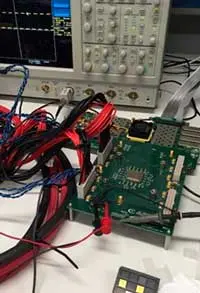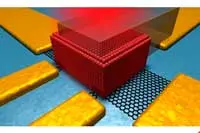Electronics News
Archive : 21 June 2016 год
 A device containing 1000 independent programmable processors has been designed by a team at the University of California, Davis. Called KiloCore, the chip can perform 1.78trillion instructions per second and contains 621million transistors.
A device containing 1000 independent programmable processors has been designed by a team at the University of California, Davis. Called KiloCore, the chip can perform 1.78trillion instructions per second and contains 621million transistors.
“To the best of our knowledge,” said Professor Bevan Baas, “it is the first 1000 processor chip and the highest clock rate processor designed in a university.” While the team says other multiple processor chips have been created, none exceeded about 300 processors. KiloCore was fabricated by IBM on a 32nm CMOS process.
Each processor core can run a small program independently; the idea is to break an application into many small pieces, each of which can run in parallel on different processors, enabling high throughput with lower energy use.
Because each processor is clocked independently, it can shut itself down to further save energy when not needed. Cores operate at an average maximum clock frequency of 1.78GHz and transfer data directly to each other, rather than using a pooled memory area.
Prof Baas said the chip is the most energy efficient many core processor yet reported, who noted the 1000 processors can execute 115bn instruction/s while dissipating 0.7W, low enough to be powered by a single AA battery. This, the team adds is , more than 100 times more efficiently than a modern laptop processor.
Applications already developed for the chip include wireless coding/decoding, video processing, encryption and others involving large amounts of parallel data.
The team has completed a compiler and automatic program mapping tools for use in programming the chip.
Author
Graham Pitcher
Source: www.newelectronics.co.uk
 Researchers at ICFO – the Institute of Photonic Sciences in Barcelona – have developed a hybrid photodetector capable of attaining speed, quantum efficiency and linear dynamic range, not only in the visible spectrum, but also in the near (700 to 1400nm) and short wave infra red (1400 to 3000nm) parts of the spectrum. The device is based upon materials that can be integrated monolithically with Si CMOS electronics, as well as with flexible electronic platforms.
Researchers at ICFO – the Institute of Photonic Sciences in Barcelona – have developed a hybrid photodetector capable of attaining speed, quantum efficiency and linear dynamic range, not only in the visible spectrum, but also in the near (700 to 1400nm) and short wave infra red (1400 to 3000nm) parts of the spectrum. The device is based upon materials that can be integrated monolithically with Si CMOS electronics, as well as with flexible electronic platforms.
The hybrid device features an active colloidal quantum dot photodiode with a graphene phototransistor. By including an ‘active’ quantum dot photodiode, the team could increase charge collection in a highly absorbing thick quantum dot film. This, in turn, increased quantum efficiency, as well as the photoresponse.
The active quantum dot layer is said to allow more effective charge collection by exploiting carrier drift towards the graphene layer instead of relying only on diffusion. The researchers then combined this scheme with a graphene transistor to register high gains and gain-bandwidth products.
According to the team, their works shows this hybrid architecture demonstrates the potential of graphene and active quantum dot materials, opening new pathways for their integration in other optoelectronic materials in search for much higher performance and broader functionality.
Author
Graham Pitcher
Source: www.newelectronics.co.uk

